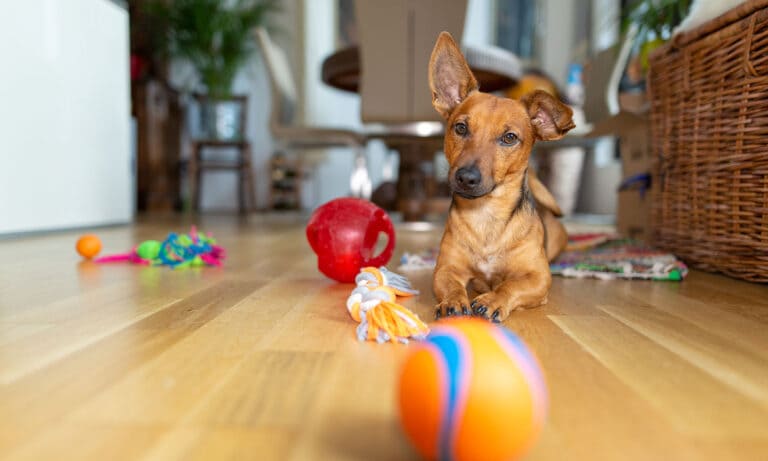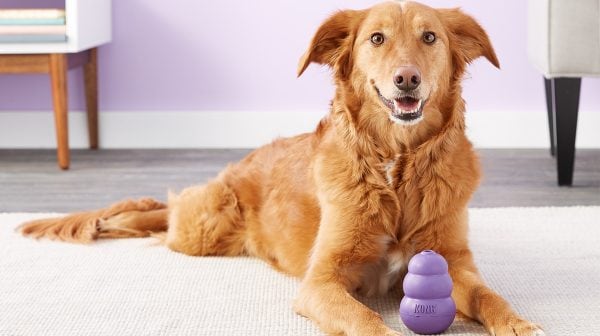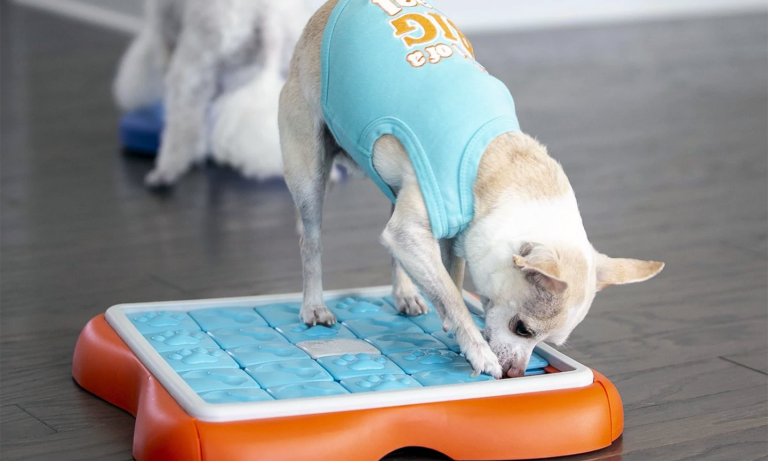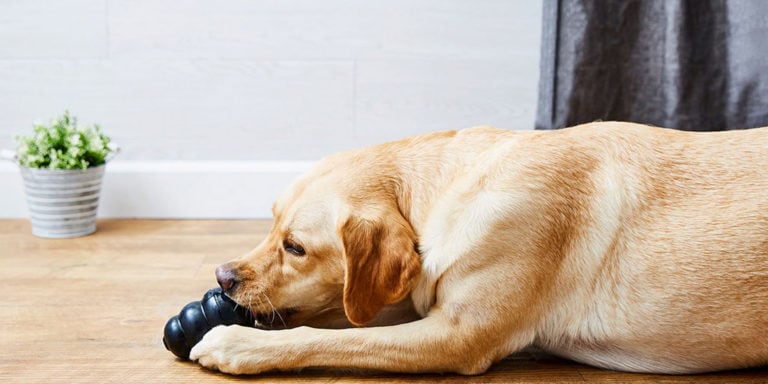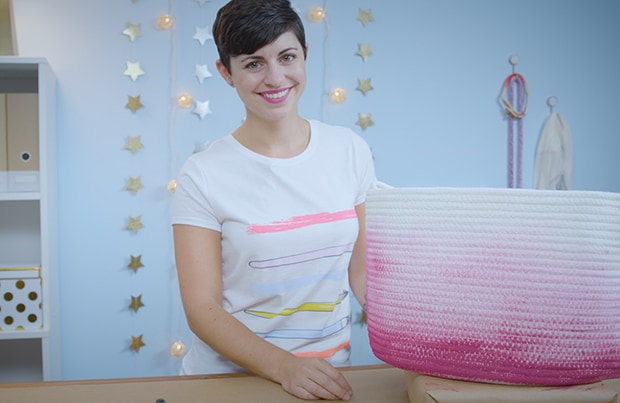It’s easy to get overwhelmed when picking out dog toys for your furry best friend. Tug toys, balls, plush toys and dog interactive toys—there are almost too many options. Your dog’s toys are an important part of his life for both exercise and mental stimulation, and picking the right ones can make life better on both ends of the leash. While it’s a fair assumption that USA-made products are always the safest way to go, there are still additional considerations you should take into account. Watch out for these dog toy dangers to keep your dog’s playtime as healthy and constructive as possible.
Laser Pointers
This “toy” seems like a fantastic option because your dog can’t get his paws on it and therefore can’t destroy it. Plus, using a laser pointer is an easy way to exercise your dog without exerting any effort, right? Not exactly.
Laser pointers can teach dogs to always be on the hunt for moving light patterns, which can translate to wanting to chase any shifting light. That means your dog might start tracking the reflection from a watch face moving across the ground, or the lights of a passing car bouncing on the wall. Some dogs fixate on moving lights to the point of developing an OCD-like need to go after all shifting light. Add to that the fact that there’s no payoff for laser-play for your pup—the dog never gets to take down his prey—and you have a recipe for a frustrating and potentially hazardous game.
Human Toys
Before you repurpose a human toy for your dog, make sure to inspect it with an eye for how dogs play. Many of the aspects that make toys unsafe for young children—like pieces that can come off and pose a choking hazard—are also obviously hazardous for dogs. But, keep in mind that dogs are exponentially tougher on their toys than children, so features that might not be of concern for human play can pose a greater danger for dogs. The seams on higher quality plush dog toys are usually reinforced to withstand rough play, which isn’t the case for children’s soft toys. That means that the dog will have quicker access to whatever the toy is stuffed with, from polyfil to plastic pellets. Add to that unusual materials on some human toys like shiny metallic textiles and pluck-able fur and hair, and you have the potential for ingested objects and “linear foreign bodies” like string that can get wrapped around the back of the tongue or twisted in the intestines.
Plastic “Chew” Bones
Dog-safe bones are made of animal parts and are meant for some degree of consumption, and plastic toys are made for play, but there are several brands on the market that make this distinction unclear. Some plastic or rubber “bones” are often flavored to encourage chewing, but if you read the fine print on the packing you’ll see that they’re meant for “dental stimulation” not consumption. Tell that to a determined dog!
If you have an aggressive chewer, opt for a dog-safe bone like bully sticks or marrow bones, or a treat-stuffable “busy” toy that won’t break into pieces with lots of chomping. And to be extra careful, always supervise your dog when he’s chewing on something until you’re sure that he can’t rip off small pieces—or worse, swallow it whole.
Surprise Choking Hazards
It’s a simple enough concept that most pet parents understand—you shouldn’t give your dog toys that are small enough for him to choke on. However, sometimes the line between good fun and a potential hazard isn’t clear, especially when play gets vigorous. Even tennis balls, the go-to dog toy, can pose a risk. If the ball is launched high and the dog leaps up to get it with his head back, it can get wedged in the back of the dogs’ mouth behind the rear teeth, blocking the dog’s airway. To avoid blockage accidents, any toy used in fast-moving play should be sized so that it doesn’t fit completely in a dog’s mouth.
Balls With a Single Hole
Balls made for dogs must have at least two holes in them to prevent dangerous suction from building up within the toy as the dog chews on it (appropriately-sized balls without holes are fine). This could have dangerous—and even deadly—consequences.
Most plastic and rubber balls made specifically for dogs now adhere to this safety standard, but be aware that there are still toys on the market that have a hidden single-hole hazard. Tug toys that have a ball attached to a string might only have one hole where the rope is threaded in, and if the dog chews the rope off that leaves a dangerous single-hole ball. Always checks to make sure that your dog’s ball toys have at least two holes to prevent accidents.
Cheap Toys of Dubious Origin
Unfortunately, there are no safety standards in place that require dog toy manufacturers to test the levels of chemicals present in their products, so that $4 “Made-in-China” vinyl toy your dog is slobbering on could contain hazardous toxins. If you have a dog that likes to destroy his toys it might seem like a wise economic choice to buy inexpensive toys, but investing in high-quality, USA-made products is likely better for your dog’s long-term health. (Keep in mind, USA-made is not a guarantee of quality and safety.)
Look for toys that are listed as nontoxic and, if possible, BPA-and-phthalate-free.Take a close look at the toy’s packaging before you purchase it—some manufacturers attempt to camouflage the manufacturing location by adding a large American flag with the designation “designed in the USA.”

Victoria Schade is a dog trainer, author & speaker who has contributed to The Washington Post, Martha Stewart, and other publications.
Share:

